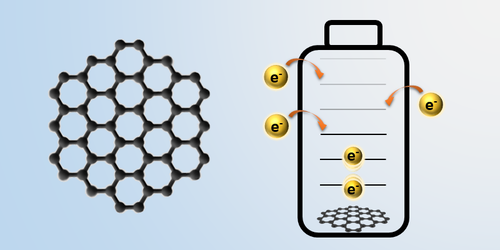Nanoquantization Fills Gap in Battery Technology
When designing a new energy-storage device, scientists consider both how much energy a system stores (its energy density) and how quickly it charges and discharges (its power density). Typically, improving one of these properties degrades the other. Now Kirk Bevan at McGill University, Canada, and his colleagues propose a device called a pseudocapacitive battery that uses a phenomenon called quantized capacitance to provide both a high energy density and a high power density [1]. The team says that many energy-storage applications could benefit from such a device.
The capacitor and the battery are two complementary energy-storage devices. Capacitors charge and discharge quickly, so they can deliver a lot of power. But their energy density is low because the energy can only be stored via charges placed on the electrodes’ surfaces. Batteries, on the other hand, can store energy throughout their volume, giving them a high energy density. But the chemical reactions that allow this storage are comparatively slow, so they deliver less power.
The device imagined by Bevan and his colleagues combines the advantages of capacitors with those of batteries. The system consists of a volume of disk-shaped graphene nanoparticles sandwiched between two electrodes. To get a high power density, the team stored electrons in discrete energy levels on the surface of the nanoparticles, whose size they were able to tune so that the device’s response to an applied voltage mimicked that of a capacitor. To get a high energy density, they filled much of the volume between the device’s two plates with nanoparticles to mimic the energy-storage method of a battery.
The calculations suggest that pseudocapacitive batteries could have power densities about 10 to 20 times higher than conventional batteries without sacrificing significant energy density. Bevan says there are some engineering challenges to overcome before such a device could be realized, but his team’s calculations show that this is a path well worth pursuing.
–Katie McCormick
Katie McCormick is a freelance science writer based in Sacramento, California.
References
- Y. W. Foong et al., “Towards a pseudocapacitive battery: Benchmarking the capabilities of quantized capacitance for energy storage,” PRX Energy 1, 013007 (2022).




